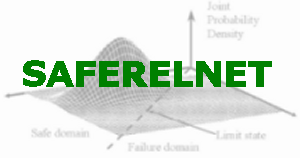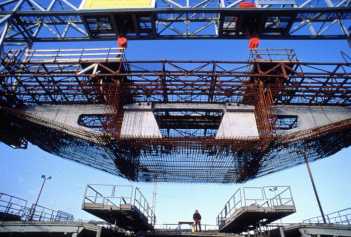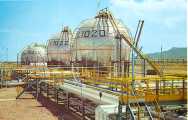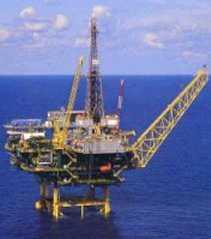 |
 |
 |
 |
| Thematic Network on Safety and Reliability of Industrial Products, Systems and Structures | |||
| segunda-feira, 15 de dezembro de 2025 | |||
       |
| WP 2 - Risk Assessment Methodology | ||||||
|
WP Leader: EQE Objectives This task deals with quantified risk assessment, which includes risk analysis, definition of risk acceptance criteria and risk management planning. The present methods and approaches to deal with these problems will be reviewed, covering both the methodologies as such and their applications to different problems in different industries, so as to illustrate practical difficulties that are raised when applying the methods to specific situations. Task 2.1 – Quantitative risk analysis (QRA) Task leader: Petrellus In this task the best practices of QRA will be identified for the different application areas including civil engineering, process engineering and offshore engineering. The task objectives are as follows: • To identify current practice of QRA in process, oil & gas, transportation and civil engineering. • To identify gaps and weaknesses in the current practice of QRA. • To identify methods of QRA which have been developed in research and academia, which have the potential of a successful application in industrial practice. • To define the best state-of-the-art methods of QRA in combination of the best current practice and the methods from research and academia which have the potential of successful application in various industries. The deliverables of this task are: • A report on the current practice in the Quantitative Risk Analysis, which will include the identification of weaknesses and gaps in the QRA. • A Workshop, which will involve the best relevant expertise to identify methods of QRA that have been developed in research and academia, which have the potential of a successful application in industrial practice. • A report on the best state-of-the-art methods of the QRA, incorporating good current practice together with methods of QRA that have been developed in research and academia, which have the potential of a successful application in industrial practice. Task 2.2 – Risk acceptance criteria Task leader: EQE This task deals with the formulation and philosophical background of risk acceptance criteria including economical risks, risks to personnel and environmental risks. The important aspect of risk criteria is the development of a method by which the results of a risk analysis can be translated into recommendations on the tolerability of the overall system risk (risk metric), and the extent to which taking further measures to reduce the risk may be justified (risk management). The state of the art for assessing acceptance criteria will be established and described. The link between the modelling of uncertainties used in the QRA and the risk acceptance criteria will be considered. This task will address the different balance between societal and industrial costs and risks in each case and the different risk control measures available. Importantly the task will take a life cycle view so that the basis for risk acceptance at the outset of a development can be set alongside the confederations for life extension or replacement of ageing infrastructure and treatment of uncertainties and interaction with the Precautionary Principle. The primary objective of this task is to produce a unified risk criteria that could be applied across EU. An initial framework for the unified criteria will be presented at the Workshop in 2003. Task 2.3 – Bayesian Modelling in Risk Assessment Task leader: ETHZ This task will investigate the possibilities for introducing a Bayesian probabilistic modelling into risk assessment. Risk assessment of technical components (classical components and systems reliability analysis), structural components (structural reliability analysis of components and systems), organisations and operations will be considered. Uncertainties and adverse events due to the individual or integral effect of technical, human and organisational failures will be treated. In particular the problem of integrating frequentistic information, probabilistic models for failure events and subjective information into risk assessment will be addressed taking basis in Bayesian formulations. The results will be collected in a report summarising the state of the art, giving propositions for approaches and formulations to be utilised and finally identify problem areas for which solutions are still needed. Task 2.4 – Fire and explosion risk in various industrial sectors Task leader: CorrOcean This task will survey methods used in identifying and management of fire and explosion risk in different industries. Methods used to predict effects and consequences of fire and explosion will be reviewed with special emphasis on possibility of improvement. Best practice methods including use of probabilistic models will be summarised. Interfaces between prediction methods and their use in the risk quantification and risk management will be presented. Task 2.4 (Subtask1): Method of using the genetic algorithm for improving the system of analysis of people evacuation in cases the fire growths. Task 2.4 (Subtask2): Survey methods of passive fire protection applied on ships. Task 2.5 - Risk Assessment of Natural Hazards Task leader: TU Delft This task will review the ways to deal with the risk of natural hazards affecting industrial systems and infrastructures. It will investigate stochastic and probabilistic approaches to environmental sciences and engineering, including interactions of earth and atmospheric environments with people and ecosystems. In particular the investigation and review of the performance of short- and long term probabilistic forecasting models of hydro-geological hazards (river- and sea floods, storms, extreme precipitation, earthquakes, etc), taking into account the availability of mapping and management strategies, improved disaster preparedness and mitigation will be studied. Focus will be made on uncertainty - and risk assessment of short-term and long-term forecast models. This task furthermore investigates the need for observations of basic marine, terrestrial and atmospheric parameters necessary for global change research and management strategies, and of extreme events analysis. |
||||||
| (Back) | ||||||
| Home | Overview | Structure | Workplan | Members | Meetings | Login |
| ©
2002 SAFERELNET Optimized for Internet Explorer 5+ |